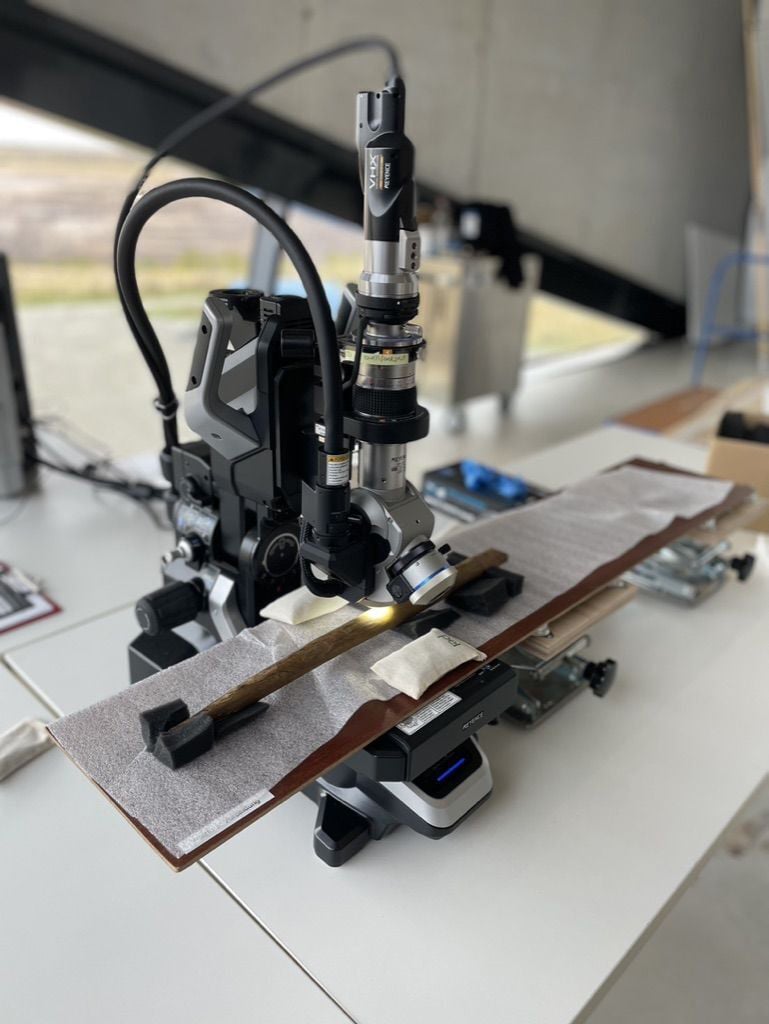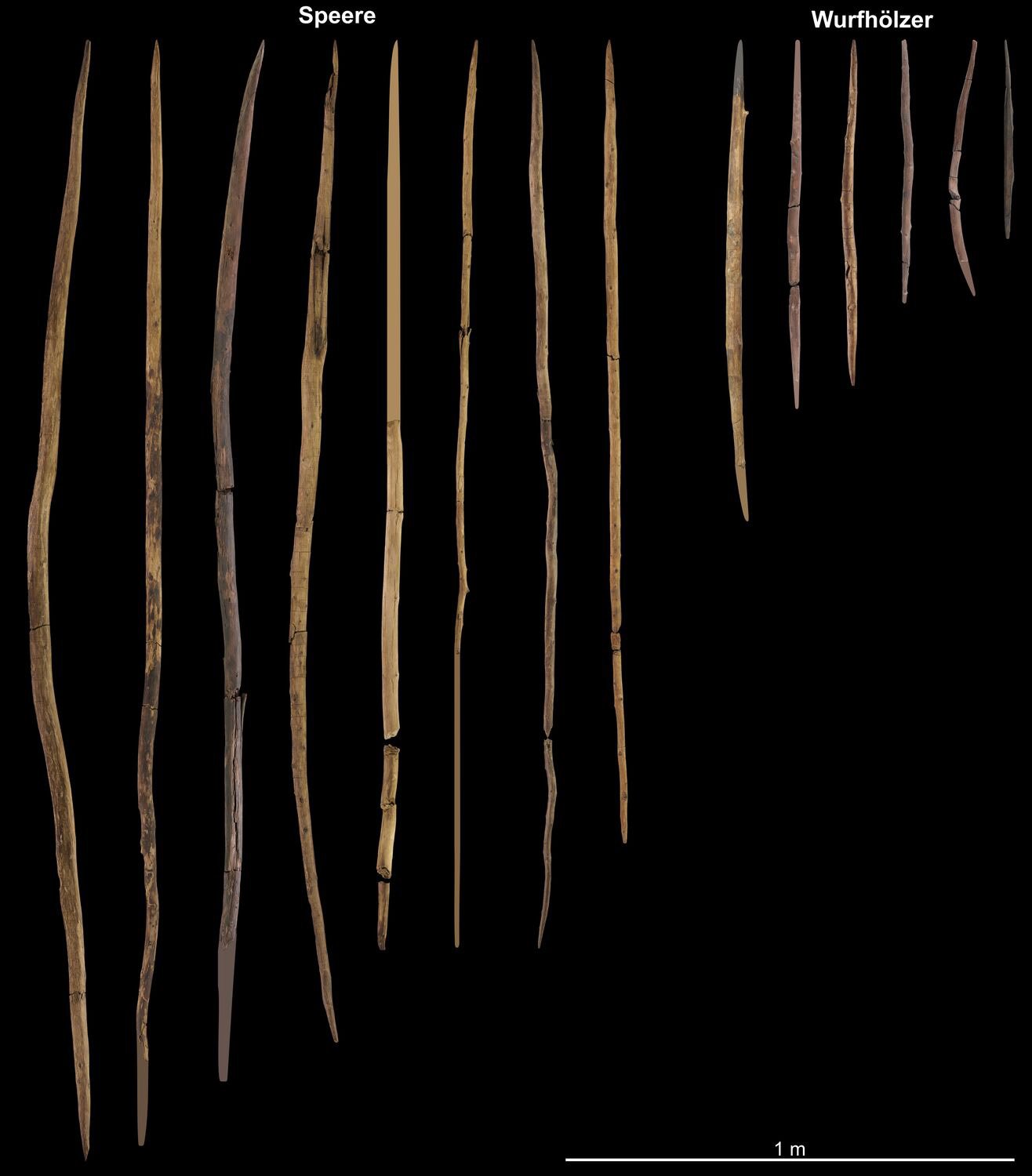Discovery of human engineering dating back... 300,000 years
Published by Redbran,
Source: Proceedings of the National Academy of Sciences
Other Languages: FR, DE, ES, PT
Source: Proceedings of the National Academy of Sciences
Other Languages: FR, DE, ES, PT
Follow us on Google News (click on ☆)
These findings, including spears and a double-pointed throwing stick, found among animal bones on the shores of an ancient lake, have piqued the curiosity of the international community.

Throwing stick under a 3D microscope, allowing for detailed study of the woodworking methods.
Credit: Tim Koddenberg, University of Göttingen
An interdisciplinary research team involving the universities of Göttingen, Reading in the UK, and the Lower Saxony State Office for Cultural Heritage (NLD) examined these wooden objects using advanced imaging techniques such as 3D microscopy and micro-CT scanners.
These analyses revealed previously unknown woodworking methods, including the splitting technique. This discovery indicates a more varied and extensive use of fir and pine wood, with on-site manufacturing of spears and throwing sticks, as well as repair and recycling of damaged tools.
The results of this research, published in the journal PNAS, double the number of known wooden weapons at the site, with at least 20 spears and throwing sticks identified. This underlines the importance of wood as an essential raw material for early humans, a material rarely preserved from this period.
The diversity of woodworking techniques used reveals considerable experience, technical know-how, and sophisticated work processes. These findings attest to the crucial importance of wood in human evolution, uniquely illustrated by the Schöningen site, which has been recently proposed for inscription as a UNESCO World Heritage Site by the State of Lower Saxony.

Eight spears and six throwing sticks from the Schöningen site, used for hunting large and small animals. The fragments have been complemented by drawn elements.
Credit: Volker Minkus/MINKUSIMAGES, Christa Fuchs, Matthias Vogel, with additional drawn elements by Dirk Leder, NLD
This study was funded by the German Research Foundation (DFG) and the Ministry of Science and Culture of Lower Saxony.